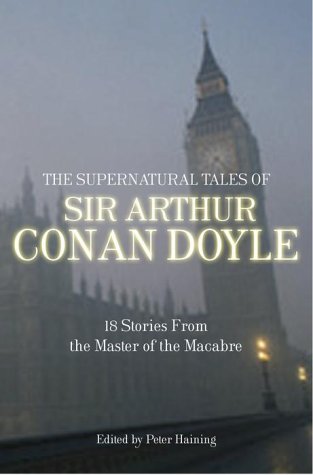 Heroic figures generate enthusiasm and inspire others to reach heights that they never thought they could try. My first writing hero is still exciting as hell to read. I got into Arthur Conan Doyle when I was 13 after reading a bio on him for a class assignment. I became so fascinated with his life that I had to read his work. Since then, I have read all of his Sherlock Holmes novels and stories multiple times as well as dozens of others. He is best-remembered for Holmes but he wrote prolifically in numerous genres including historical fiction, science fiction, mainstream, war, politics, sports, spiritualism, and horror.
Heroic figures generate enthusiasm and inspire others to reach heights that they never thought they could try. My first writing hero is still exciting as hell to read. I got into Arthur Conan Doyle when I was 13 after reading a bio on him for a class assignment. I became so fascinated with his life that I had to read his work. Since then, I have read all of his Sherlock Holmes novels and stories multiple times as well as dozens of others. He is best-remembered for Holmes but he wrote prolifically in numerous genres including historical fiction, science fiction, mainstream, war, politics, sports, spiritualism, and horror. Mystery and horror go together like mashed potatoes and gravy. I think it is partly because mysteries and horror stories often start and are nourished in a gloomy atmosphere and characters confront the unknown in both. In mysteries, the characters peel back the unknown and sometimes, the gloom dispels. It's not necessary for characters in a horror story to unveil the unknown. The gloom might be dispelled but not before it congeals into something threatening and perhaps insurmountable. Doyle introduced some horror into his Holmes stories. "The Speckled Band" is a terrifying story of a murder within a locked room. Highly atmospheric, it's one of my favourites. "The Cardboard Box" is gruesome and while "The Sussex Vampire" is less so, it was the basis for The Jeremy Brett TV movie The Last Vampyre. The highest pinnacle of horror as far as Holmes is concerned has to be The Hound of the Baskervilles. Charles Baskerville is found dead on the moors and the family curse of a murderpus spectral hound is brought to Holmes' attention. I mention this book frequently because not only is it a memorable and thrilling story but it's one of the first non-kid books I ever read. It was a rite of passage of sorts. This book also tends to adapt well to film. The adaptations featuring Basil Rathbone, Peter Cushing, Jeremy Brett, and Benedict Cumberbatch are all entertaining and watchable.

Aside from Holmes, Doyle wrote excellent horror stories. "The Captain of the Pole Star" is an effective tale of supernatural evil in the arctic. "Lot 249" is a brilliant tale of a reanimated mummy and one of the first of it's kind. It was also the basis of the first segment of the Tales from the Darkside movie. "The Parasite" and "John Barrington Cowles" are powerful tales of mesmerism, the latter is particularly menacing. "The Terror of Blue John Gap" might be considered standard fare for where monsters hidden in the earth are concerned but I thought it was awesome. "The Silver Mirror " is a dark one while "The Horror in the Heights" has a Lovecraftian feel as a lone aviator in the pre-world war era discovers that the skies aren't as friendly as he thought. There are also natural horrors that Doyle's characters encounter in the form of a snake in "The Fiend of the Cooperage" and "The Brazilian Cat."
 Doyle was very learned and well-traveled which he incorporated into his fiction. It helps to be a doctor when it comes to writing about murder. From the looks of it, he was a kindly and honorable man who even spent some of his spare time clearing a couple of innocent people of crimes they didn't commit. This is, if course, overlooking his politics but I will leave that to someone who knows British imperialism better than I do and I find that discussing a subject like that isn't as black and white as some people want it to be.
Doyle was very learned and well-traveled which he incorporated into his fiction. It helps to be a doctor when it comes to writing about murder. From the looks of it, he was a kindly and honorable man who even spent some of his spare time clearing a couple of innocent people of crimes they didn't commit. This is, if course, overlooking his politics but I will leave that to someone who knows British imperialism better than I do and I find that discussing a subject like that isn't as black and white as some people want it to be.I bought a copy of Gothic Tales by Doyle last year, an easy-to-find edition by Oxford World Classics, which contains 34 of his non-Sherlock stories. I highly recommend it. The author of the introduction wrote, "Arthur Conan Doyle is the greatest genre writer Britain has ever produced." I don't think this is an exaggeration.
Written by Nicholas Montelongo
The author does not allow comments to this entry
No comments